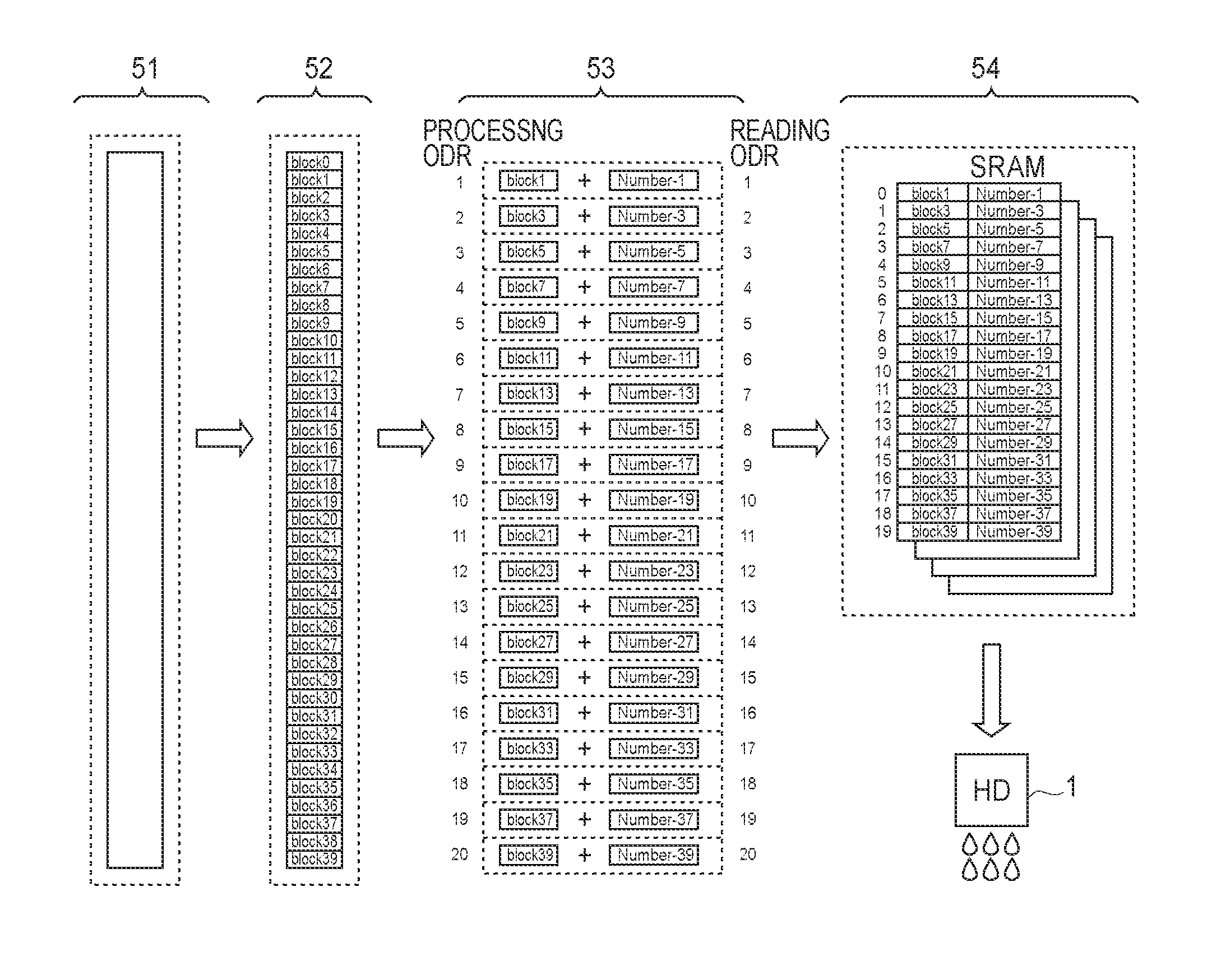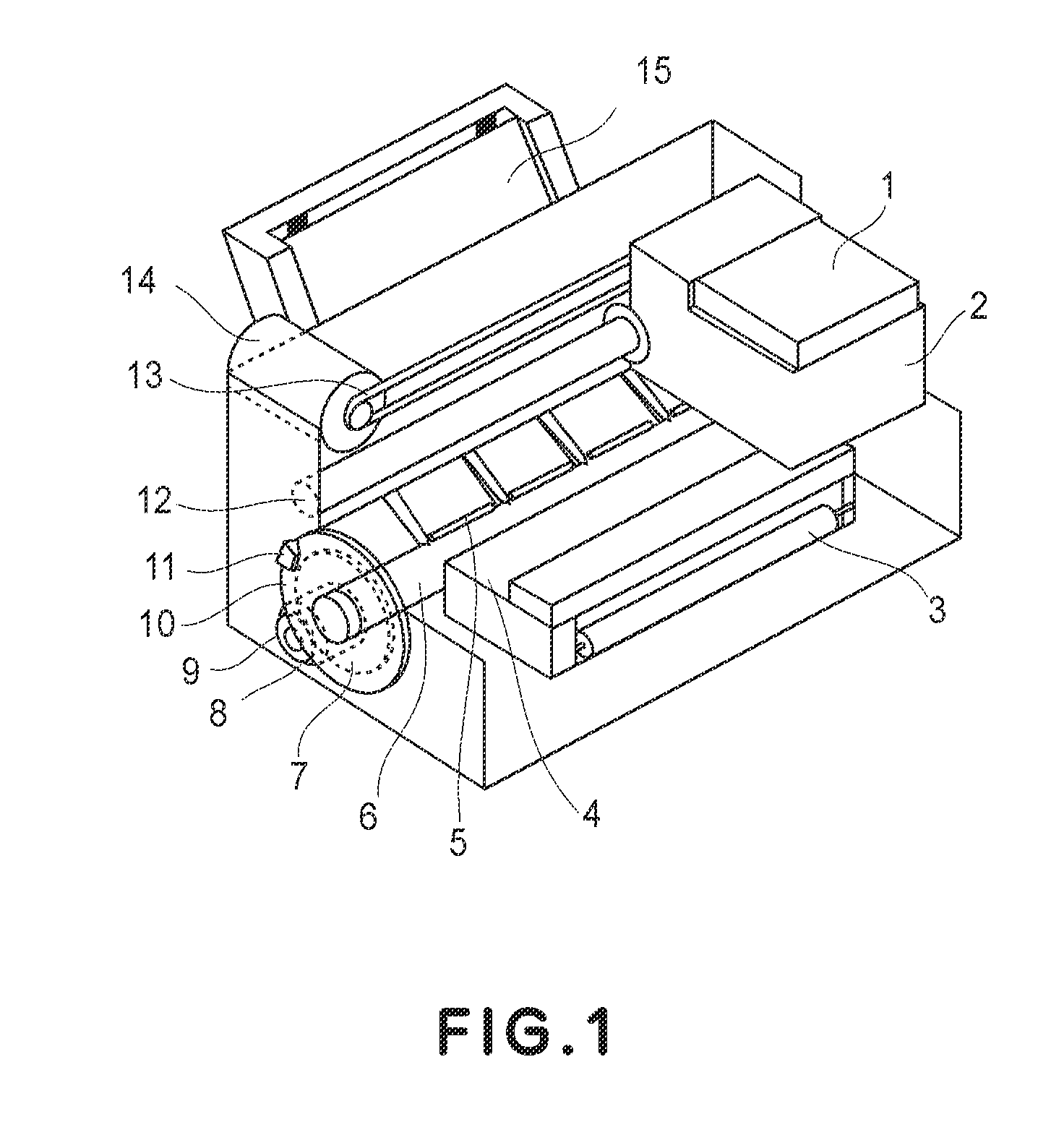Recording apparatus
a recording apparatus and nozzle technology, applied in the direction of printing, other printing apparatus, etc., can solve the problems of increasing the number of nozzle columns, the difficulty of increasing the recording speed, and the number of circuits
- Summary
- Abstract
- Description
- Claims
- Application Information
AI Technical Summary
Benefits of technology
Problems solved by technology
Method used
Image
Examples
embodiment 1
[0062]FIG. 4(A) shows the nozzle column arrangement of the recording head 1. Two odd number nozzle columns (odd1 and odd2) and two even number nozzle columns (even1 and even2) are provided per color. The four nozzle columns are selectively driven to form a single line of dots on the recording medium.
[0063]As shown in FIG. 4(A), the nozzles (indicated by circles in drawing) in each nozzle column are aligned in the direction (vertical direction in drawing: secondary scan direction) perpendicular to the direction in which the recording head 1 scans recording medium (leftward and rightward directions in drawing). The recording head 1 is set up so that a given odd number nozzle column and the even number nozzle column paired with this odd number nozzle column record the picture elements having odd ordinal numbers (counting from top side of head) and the picture elements having even ordinal numbers. In the case of the recording head 1 in the drawing, the recording head 1 is structured so ...
embodiment 2
[0096]FIG. 4(B) shows the nozzle arrangement of the recording head 1, which is different from the one shown in FIG. 4(A). In this case, four nozzle columns (odd1, odd2, odd3, and odd4) of nozzles having an odd number are provided per color, and also, four nozzle columns (even1, even2, even3, and even4) of nozzles having an even number are provided per color.
[0097]A single line of dots can be formed on recording medium by selectively driving these eight nozzle columns.
[0098]This embodiment is different from the first one in the number of the nozzles columns of the recording head. Otherwise, this embodiment is the same as the first one in terms of recording head structure. Thus, the structure of the recording head in this embodiment will not be described.
[0099]FIG. 9 is a schematic drawing, which is similar to FIG. 5 which was used to describe the first embodiment.
[0100]A nozzle data 91 is the same as the nozzle data 51. A block data 92 is the same as the block data 52. The driving da...
embodiments 1 and 2
Control Sequences in Embodiments 1 and 2
[0124]Next, referring to FIG. 12, the control sequences carried out by the recording process controlling portion 200 will be described. This control sequence is carried out primarily by the CPU 18. The control sequence shown in FIG. 12 is stored the ROM 12 or the like.
[0125]In Step S121, the nozzle data are read out from the print buffer. In Step S122, the nozzle data are converted into block data. In Step S123, the driving data having both the block number and block data are stored in the transfer buffer.
[0126]In Step S124, it is checked whether or not the driving data for the number of the nozzle blocks in each of the nozzle columns to be used for recording have been stored. For example, in the case of the first embodiment, it is checked whether or not the driving data for 20 nozzle blocks have been processed and stored.
[0127]In Step S125, if the answer is No, the control portion 200 returns to Step S123 and continues the sequence. If the an...
PUM
 Login to View More
Login to View More Abstract
Description
Claims
Application Information
 Login to View More
Login to View More - R&D
- Intellectual Property
- Life Sciences
- Materials
- Tech Scout
- Unparalleled Data Quality
- Higher Quality Content
- 60% Fewer Hallucinations
Browse by: Latest US Patents, China's latest patents, Technical Efficacy Thesaurus, Application Domain, Technology Topic, Popular Technical Reports.
© 2025 PatSnap. All rights reserved.Legal|Privacy policy|Modern Slavery Act Transparency Statement|Sitemap|About US| Contact US: help@patsnap.com



